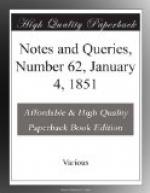“Frequens fuit apud veteres utrium usus ad flumina trananda, Liv. 21. 27. Hispani, sine ulla mole, in utres vestimentis conjectis, ipsi cetris suppositis incubantes, flumen tranavere, Caes. B.G. i. 48. Lusitani, peritique earum regionum cetrati citerioris Hispaniae, consectabantur, quibus erat proclive transnare flumen, quod consuetudo eorum omnium est, ut sine utribus ad exercitum non eant, (Cf. Herzog., qui longam huic loco adnotationem adscripsit), Curt. 7. 5. Utres quam plurimos stramentis refertos dividit; his incubantes transnavere amnem, Plin. 6. 29. 35. Arabes Ascitae appellati, quoniam bubulos utres binos sternentes ponte piraticam exercent, h.e. utribus junctis tabulas instar pontis sternentes. Adde Front. Strat. 3. 13., et Ammian. 30. 1. med.”
“Utricularii vocabantur qui utriculos, seu utres inflatos ratibus ita subjiciebant, ut iisdem flumina transnare possent. Eorum collegium in quibusdam urbibus ad flumen aliquod sitis habebatur, ideoque utricularii saepe cum nautis conjunguntur, Inscr. ap. Mur. 531, n. 4. Ex voto a solo templum ex suo fecerunt collegio utriculariorum.”
JANUS DOUSA.
Manpadt House, near Haarlem.
* * * * *
FOLK LORE OF SOUTH NORTHAMPTONSHIRE, NO. 3.
Hedgehog.—Among other animals looked upon in a superstitious light, we have the hedgehog, who, in addition to his still credited attribute of sucking cows, is looked upon by our rustics as the emblem of craft and cunning; playing the same part in our popular stories as Reynard in the more southern fabliaux. They tell concerning him, the legend given by M.M. Grimm, of the race between the Hare and Hedgehog. The Northamptonshire version makes the trial of speed between a fox and hedgehog. In all other respects the English tale runs word for word with the German.
Hares.—Besides the ancient superstition attached to the crossing of the path by one of these animals, there is also a belief that the running of one along the street or mainway of a village, portends fire to some house in the immediate vicinity.
Toads.—Belief in their venomous nature is yet far from being extinct. This, added to the ill-defined species of fascination which they are supposed to exercise, has caused them here, as elsewhere, to be held in great abhorrence. I have heard persons who ought to have known better, exclaim on the danger of gazing upon one of the harmless reptiles. The idea respecting the fascinating powers of the toad, is by no means confined to our district. Witness the learned Cardan:
“Fascinari pueros fixo intuitu magnorum bufonum et maxime qui e subterraneo specu aut sepulchris prodierint, utque ob id occulto morbo perire, haud absurdum est.”—De Rerum Varietate, lib. xvi. c. 90.
Crickets, contrary to the idea prevailing in the western counties, are supposed to presage good luck, and are therefore most carefully preserved. Their presence is believed to be a sure omen of prosperity; while, on the other hand, their sudden departure from a hearth which has long echoed with their cry, betokens approaching misfortune, and is regarded as the direst calamity that can happen to the family.




